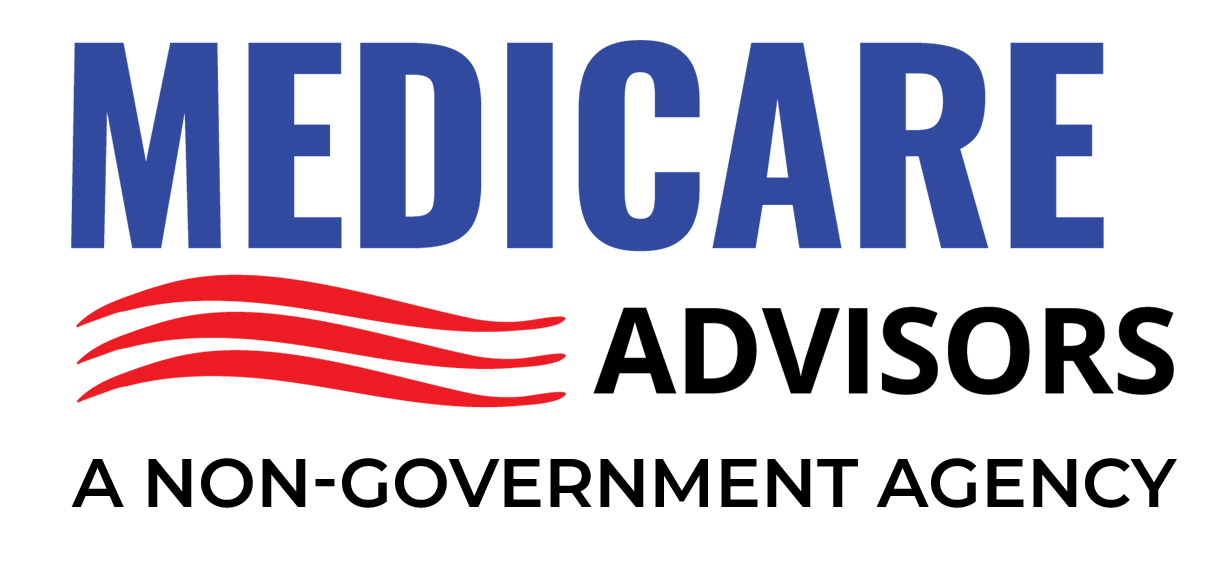Medicare Advantage plans (also known as Medicare Part C) remain a popular option for those seeking a comprehensive alternative to Original Medicare. For 2025, insurers are offering a variety of best Medicare Advantage plans tailored to meet different healthcare needs. Each plan bundles Medicare Part A (hospital coverage) and Part B (medical coverage), and many also include Part D (prescription drug coverage) and extra perks like dental, vision, and hearing benefits.
Selecting the best rated Medicare Advantage plans can be a challenge, especially if you’re new to Medicare or looking to switch coverage. To make an informed decision, it’s vital to understand how these plans work, the types of plans available (HMO, PPO, etc.), key factors like networks, costs, and additional services, as well as what real beneficiaries have experienced.
What Is Medicare Advantage?
Medicare Advantage plans are offered by private insurance companies that contract with Medicare. They provide all the coverage of Original Medicare but can add perks such as:
- Prescription drug coverage (Part D)
- Routine dental, vision, and hearing
- Fitness memberships
- Over-the-counter allowances
- Meal delivery or transportation services
Find Medicare Plans in 3 Easy Steps
We can help get up to $0 monthly premium Medicare plans
While Original Medicare allows you to see any provider nationwide that accepts Medicare, many Medicare Advantage plans operate within provider networks (especially HMOs). If you go out of network without emergency circumstances, you may pay more or be denied coverage altogether. That said, PPO plans offer somewhat more flexibility, allowing you to see out-of-network providers at a higher cost.
“Medicare Advantage plans can be a wonderful resource for many people,” notes Henry Beltran, the owner of Medicare Advisors. “Yet, it’s crucial to verify whether your doctors, prescription needs, and lifestyle fit into the plan’s structure.”
Why Medicare Advantage Might Be Right for You
- All-in-One Coverage: Combine hospital, medical, and often prescription drug coverage into a single plan.
- Cost Protections: Medicare Advantage plans must include an annual out-of-pocket maximum, giving you a cap on overall healthcare expenses.
- Added Benefits: From routine dental, vision, and hearing to fitness perks, many find the extra services beneficial and cost-saving.
However, keep in mind:
- Networks can be restrictive.
- Prior authorizations may be required for certain services.
- You must generally remain in your plan’s service area for routine care.
Why 2025 Is a Unique Year for Medicare Advantage
- Enhanced Plan Availability: More counties across the country are being covered, giving beneficiaries a broader range of plan choices.
- Competitive Premiums: Some plans may offer $0 premiums, but you should weigh that against higher deductibles or copays.
- Rising Star Ratings: CMS has continued refining its Star Ratings (1 to 5 stars) to reflect quality measures like patient outcomes and customer service. Plans with a 5-star rating often receive extra resources to invest in member benefits.
Key insight from Henry Beltran:
“Because insurers compete intensely in this arena, beneficiaries stand to gain from better plan features. Still, it’s vital to read the fine print. A plan that scores well nationally might have slightly different benefits in your local area.”
People Are Always Asking:
Every year, countless individuals grapple with questions like:
- “Are the best Medicare Advantage plans more expensive than Original Medicare?”
- “Which extra services do I really need?”
- “What if my doctor isn’t in a certain plan’s network?”
It’s natural to feel uncertain. For many, healthcare decisions come with anxiety about hidden costs, plan restrictions, and coverage gaps. The best step is to consider your unique medical profile—current prescriptions, preferred doctors, budget, and the frequency of care you might require. As Beltran says, “Always tailor your search to your situation. That’s the foundation for selecting the best rated Medicare Advantage plans for you.”
Potential Plan Types in 2025
Health Maintenance Organization (HMO)
- Requires you to use in-network providers for non-emergency care.
- Typically has lower monthly premiums than PPOs.
- May require referrals for specialist visits.
Preferred Provider Organization (PPO)
- Allows you to use out-of-network providers, though at a higher cost.
- Generally higher premiums, but more flexibility.
- Referrals often not required for specialists.
Special Needs Plan (SNP)
- Designed for people with specific conditions or who are dually eligible for Medicare and Medicaid.
- Focuses on care coordination for chronic illnesses or certain living conditions.
Private Fee-for-Service (PFFS)
- Lets you see any Medicare-approved provider, but costs and coverage can vary widely.
- Fewer are available in some areas, making them less common.
HMO-POS (Point-of-Service)
- Similar to HMO but allows limited out-of-network care.
- Potential for greater flexibility while still emphasizing network services.
Find Medicare Plans in 3 Easy Steps
We can help get up to $0 monthly premium Medicare plans
Key Changes for 2025
Increased Focus on Preventive Care
Many best Medicare Advantage plans highlight preventive services: annual screenings, wellness check-ups, vaccinations, and telehealth sessions. Preventive care can catch health issues early, potentially reducing long-term costs.
More Telehealth Options
The availability of telehealth skyrocketed over the past few years. In 2025, expect even broader coverage for virtual visits, mental health consultations, and routine care.
Innovative Supplemental Benefits
More plans are adding:
- Meal Delivery after hospitalization
- Transportation to medical appointments
- Over-the-counter (OTC) credits
- Wellness and nutrition coaching
While these extras can be highly beneficial, they can also vary dramatically by plan or region. Always check details like the number of rides allowed per year or how many meals are provided post-discharge.
What Are the Best Medicare Advantage Plans?
UnitedHealthcare (UHC)
Strengths
- Broad national network with many participating hospitals and doctors.
- Enhanced Part D coverage for common medications.
- Extra services like virtual visits and healthy food cards for certain chronic conditions.
Drawbacks
- Possible strict prior authorization requirements that may delay care.
- Costs can vary significantly by zip code.
Humana
Strengths
- Emphasis on comprehensive care: includes popular plans focusing on wellness and disease management.
- Robust telehealth and online tools, making it easy to schedule appointments or check medical records.
- Often includes over-the-counter allowances.
Drawbacks
- Network size can differ; some localities may offer limited specialist options.
- Some plans have more copay tiers, which can complicate medication expenses.
Aetna
Strengths
- Recognized for prescription drug coverage with extensive formulary options.
- Chronic care management programs to help beneficiaries navigate multiple conditions.
- Plans customized at the local level to address specific community health needs.
Drawbacks
- In certain regions, in-network providers can be less plentiful.
- Copays and deductibles vary widely, so thorough cost comparison is essential.
Blue Cross and Blue Shield (BCBS)
Strengths
- Local affiliates across the nation, offering specialized regional plans.
- Often high in customer satisfaction due to local presence and community ties.
- Good mix of HMO, PPO, and HMO-POS options.
Drawbacks
- Costs, coverage, and provider networks can fluctuate dramatically by state or even county.
- Policy details may be complex given each state’s BCBS operates semi-independently.
Kaiser Permanente
Strengths
- Integrated healthcare model: the insurer and provider network operate under one system for seamless coordination.
- Often high Star Ratings and excellent results in preventive care metrics.
- Straightforward billing and predictable copays.
Drawbacks
- Limited to states where Kaiser is present (e.g., CA, CO, GA, HI, MD, OR, VA, WA, DC).
- Out-of-network coverage is minimal, making it difficult if you travel often.
Find Medicare Plans in 3 Easy Steps
We can help get up to $0 monthly premium Medicare plans
People Are Always Asking: “Which Plan Is Best?”
The best rated Medicare Advantage plans ultimately hinge on your unique situation. There is no universal “one-size-fits-all” plan. Check the following before deciding:
- Provider Network: Does your preferred doctor accept the plan?
- Medications: Are your prescriptions included at reasonable copays or coinsurance?
- Additional Benefits: Dental, vision, hearing, meal delivery, and more.
- Costs: Compare monthly premiums, deductibles, copays, and out-of-pocket maximums.
- Location: Plan availability and coverage differ widely by county.
Henry Beltran emphasizes: “We encourage everyone to look at their existing medical needs, anticipated healthcare usage, and budget. Those three pillars usually guide you to your best choice.”
Potential Drawbacks of Medicare Advantage Plans
Network Limitations
Many best Medicare Advantage plans depend on restricted networks. If you travel frequently, you might face higher costs or limited coverage outside your home area unless you choose a PPO with robust travel benefits.
Prior Authorizations
It’s not unusual for certain procedures, diagnostic tests, or specialist visits to require prior approval. This can sometimes delay care and lead to extra paperwork.
Geographical Restrictions
You typically have to live in a plan’s service area for at least six months of the year. “Snowbirds” or individuals who split their time between multiple states often find it challenging to maintain consistent coverage.
Varying Costs and Plan Specifics
Plans can differ by county, city, or even neighborhood. One region might see a $0 monthly premium, while another county a few miles away could have a higher premium and different benefits.
Reviews from Real Beneficiaries
- Suzanne in Chicago, IL
- Enrolled in Humana HMO.
- Positive: Loves the preventive dental coverage and consistent telehealth for routine checkups.
- Negative: Had to wait two weeks for a prior authorization approval on a diagnostic test.
- Carlos in San Antonio, TX
- Enrolled in Aetna PPO.
- Positive: Appreciates the freedom to visit an out-of-network specialist.
- Negative: Monthly premium is higher compared to some local HMO plans.
- Martha in Atlanta, GA
- Enrolled in Kaiser Permanente.
- Positive: “I get everything under one roof—lab, doctors, pharmacy.”
- Negative: “If I want to see a specialist outside Kaiser, it’s complicated and often more expensive.”
“It’s good to read reviews, but don’t let them overshadow your personal healthcare requirements,” says Henry Beltran. “One plan might work wonders for your neighbor, but could be unsuitable for you.”
Factors to Consider When Choosing the Best Rated Medicare Advantage Plans
Network Size
- Check if your primary care physician (PCP) or specialists are in-network.
- Investigate hospital affiliations and whether you can easily see top-rated healthcare facilities.
Prescription Drug Coverage
- Look at drug formularies to confirm that your medications are covered and affordable.
- Pay attention to tiers (generic, preferred brand, non-preferred brand, specialty).
Monthly Premium vs. Out-of-Pocket Costs
- Plans may offer $0 premiums but make up for it with higher cost-sharing or deductibles.
- Some might have a monthly premium but lower copays and a more modest out-of-pocket maximum.
Additional Perks
- Routine dental, vision, and hearing check-ups.
- Fitness benefits like SilverSneakers or other gym memberships.
- Meal delivery, transportation, or OTC allowances.
Star Ratings
- Star Ratings (1-5) by CMS measure plan quality and performance. Plans that earn 5 stars can offer a Special Enrollment Period for beneficiaries to switch mid-year.
- While star ratings provide a solid overview, they’re only one factor to consider.
A Step-by-Step Approach to Picking Your Plan
- List Your Medical Needs
- Chronic conditions, specialist visits, necessary prescriptions, upcoming surgeries.
- Evaluate Plan Types
- Decide if an HMO, PPO, or SNP best aligns with your health status and flexibility needs.
- Review Plan Networks
- Check each plan’s directory to confirm your preferred doctors and hospitals are in-network.
- Compare Costs
- Monthly premium, deductibles, copays, coinsurance, and annual out-of-pocket maximum.
- Look at Additional Benefits
- Dental, vision, hearing, telehealth, transportation, meal services, OTC benefits.
- Check Star Ratings
- Higher-rated plans often have better customer satisfaction and fewer complaints.
- Consult with Experts
- Licensed brokers, State Health Insurance Assistance Programs (SHIP), or specialized advisors like Medicare Advisors.
- Enroll Wisely
- Take action during Annual Enrollment Period (AEP) from October 15 to December 7, or use other enrollment periods if applicable.
Find Medicare Plans in 3 Easy Steps
We can help get up to $0 monthly premium Medicare plans
“Gather all the plan summaries and coverage details in one place. Then, do a direct comparison,” advises Henry Beltran. “The more organized you are, the better the choice you’ll make.”
Insider Perspectives from Healthcare Professionals
- Dr. Evans, Primary Care Physician: “My patients on Medicare Advantage plans are often better with preventive visits and screenings due to how these plans incentivize it. However, the prior authorization processes can occasionally cause delays.”
- Nurse Marlene, Hospital Discharge Planner: “Plans that include home health and meal delivery benefits are invaluable for recovering patients. But some beneficiaries aren’t aware that these services exist. It’s crucial to read your plan benefits thoroughly.”
- Pharmacist Rosa, Community Pharmacy: “Patients in certain Medicare Advantage plans have excellent coverage for generic drugs but may face high copays for brand-name medications. Always check each drug’s tier before choosing a plan.”
Common Questions (FAQ)
Q: Are the best Medicare Advantage plans cheaper than Original Medicare?
A: They can be, depending on your usage and location. Medicare Advantage plans often feature $0 or low monthly premiums, but you must consider out-of-pocket costs, especially if you see specialists frequently or require specific brand-name medications.
Q: Can I switch to another Medicare Advantage plan mid-year?
A: Generally, you can change your plan during the Medicare Advantage Open Enrollment Period (January 1 – March 31) or if you meet criteria for a Special Enrollment Period (e.g., 5-star plan availability, moving out of your plan’s service area).
Q: Do all plans include Part D prescription drug coverage?
A: Most best rated Medicare Advantage plans bundle Part D, but not all. Always verify whether the plan you’re considering includes drug coverage.
Q: Does Medicare Advantage cover everything Original Medicare covers?
A: Yes, plans must offer the same Part A and Part B services as Original Medicare, but cost structures and supplemental benefits vary.
Q: Will my plan benefits change each year?
A: Likely. Insurers adjust premiums, networks, and coverage details annually. You’ll receive an Annual Notice of Change (ANOC) each fall explaining any modifications.
Highlighting Potential Pitfalls
Prior Authorization Delays
- Check how frequently your plan requires pre-approvals.
- Certain categories (imaging, surgeries, specialty drugs) often need approvals.
Provider Network Instability
- Providers might leave a network mid-year.
- It’s important to monitor updates from your plan’s website or direct mailers.
Geographic Restrictions
- Relocating to a different county or state may disqualify you from your current plan.
- If you split time between two locations, you might need to explore nationwide PPO options or consider Original Medicare with Medigap.
Costs for Frequent Travelers
- If you spend extended periods away from home, ensure you have coverage for routine care in other areas.
- HMOs may provide only emergency or urgent coverage out of the service area.
Find Medicare Plans in 3 Easy Steps
We can help get up to $0 monthly premium Medicare plans
Henry Beltran adds:
“It’s best to track any issues you encounter throughout the year—doctor visits that required out-of-network care, medication price hikes, referral problems. This log becomes invaluable when you review your options for the next Annual Enrollment Period.”
Maximizing Your Medicare Advantage Benefits
Use Preventive Services
- Many plans offer $0 copay for annual physicals, labs, and screening tests.
- Early detection can save significant costs down the line.
Leverage Extra Perks
- If your plan includes gym memberships or nutritional counseling, don’t ignore them.
- Over-the-counter allowances can reduce everyday healthcare expenses.
Review Your Drug Coverage Annually
- Plan formularies update every year. A medication in a cheaper tier this year could move to a higher tier next year.
Stay In-Network
- Even in a PPO, in-network costs are usually much lower.
- Verify with your provider if they participate in the plan each time you schedule.
Plan Changes and Enrollment Periods
Initial Enrollment Period (IEP)
When you turn 65, you have a seven-month window to sign up for Medicare (three months before your birth month, your birth month, and three months after). You can enroll in a Medicare Advantage plan if you have both Medicare Parts A and B.
Annual Enrollment Period (AEP)
- October 15 – December 7: You can switch, drop, or join a Medicare Advantage plan or Part D coverage. Changes take effect January 1 of the following year.
Medicare Advantage Open Enrollment Period (MA OEP)
- January 1 – March 31: If you already have a Medicare Advantage plan, you can switch to a different Medicare Advantage plan or go back to Original Medicare (with or without Part D).
Special Enrollment Periods (SEP)
- Events like moving out of your plan’s service area, losing employer coverage, or receiving a 5-star plan upgrade can grant you a special window to change plans.
Find Medicare Plans in 3 Easy Steps
We can help get up to $0 monthly premium Medicare plans
Henry Beltran: “Don’t wait until the last minute of the enrollment window. Start comparing plans early, so you’ll have ample time to check provider networks and drug coverage details.”
Reviews from Healthcare Professionals
- Dr. Alcott, Geriatric Specialist: “Many Medicare Advantage plans allow me to proactively coordinate care for my patients. Yet, certain plans require more paperwork, which can slow the process.”
- NP Mark, Home Health: “It’s fantastic when a plan covers in-home services thoroughly. But some limit the number of visits or require prior approvals frequently. Understanding your plan’s specific rules is essential.”
Real-World Examples
- Linda (72, Los Angeles, CA)
- Enrolled in a $0 premium HMO with dental benefits.
- Suffered a minor stroke and needed physical therapy. The plan covered her therapy sessions with a low copay, but she had to stay within a specific therapy network.
- She’s pleased overall but notes that getting a specialist referral took extra steps.
- Gary (68, Fort Lauderdale, FL)
- Wanted flexibility and enrolled in a PPO with a moderate monthly premium.
- Visits family in New York part of the year. The PPO covers out-of-state providers, albeit at a higher copay.
- Feels the premium is worth the freedom to see specialists anywhere.
- Rita (70, Des Moines, IA)
- Signed up for a plan with extra vision and hearing benefits, which allowed her to get hearing aids at a reduced cost.
- However, her prescription for a brand-name medication fell into a higher tier, leading to larger copays.
Henry Beltran weighs in:
“Real stories like Linda’s, Gary’s, and Rita’s show how coverage intricacies play out in everyday life. Always weigh pros and cons specific to your routine, medical concerns, and finances.”
How Medicare Advisors Can Help
Henry Beltran, the owner of Medicare Advisors, emphasizes the benefit of professional guidance:
“We educate beneficiaries on the differences between HMOs, PPOs, and SNPs, drilling down on each plan’s benefits, copays, and network. Our aim is to prevent surprises and ensure individuals find the best rated Medicare Advantage plans matching their unique needs.”
Whether you reach out to a private broker, a State Health Insurance Assistance Program (SHIP), or another certified counselor, external expertise can provide clarity on plan details and enrollment rules.
Detailed Look at Coverage Extras
Dental, Vision, and Hearing
- Routine check-ups often covered, but major procedures (e.g., root canals, new dentures) may come with annual coverage caps.
- Vision benefits might include annual eye exams and eyewear allowances, but high-end frames or lenses could exceed coverage.
- Hearing coverage may subsidize hearing aids or tests, sometimes requiring specific in-network suppliers.
Over-the-Counter (OTC) Allowances
- Plans often provide quarterly credits to purchase items like cold medicine, first-aid supplies, or vitamins.
- This can offset everyday health costs if you remember to use these benefits before they expire each quarter.
Meal Delivery Services
- Typically available post-hospitalization for a limited duration (e.g., 14 or 28 days).
- Can be extremely beneficial for older adults living alone or with limited mobility.
Transportation Services
- Rides to doctors’ offices or pharmacies can be included, sometimes with a monthly limit.
- Verify the number of one-way vs. round trips allowed per year.
Chronic Disease Management Programs
- Targeted resources for conditions like diabetes, heart disease, or chronic obstructive pulmonary disease (COPD).
- May include care coordinators, telemonitoring, or specialist referrals.
Pro Tips to Get the Most Out of Your Plan
- Call Customer Service: Don’t hesitate to ring up your plan’s helpline for clarifications about coverage or referrals.
- Check for Network Updates: Doctors and hospitals can join or leave networks throughout the year.
- Review Your EOB (Explanation of Benefits): Regularly check that claims are processed correctly.
- Reassess Each Year: Even if you like your plan, changes in premiums or coverage might prompt switching.
Conclusion: Finding the Best Medicare Advantage Plans for You
Ultimately, the best Medicare Advantage plans for 2025 will depend on personal factors—your doctors, current and anticipated health needs, medication costs, and your comfort with provider networks. The best rated Medicare Advantage plans typically shine in overall customer satisfaction, robust benefits, and strong Star Ratings, but never overlook individual nuances that might make a different plan more suitable for you.
Henry Beltran, owner of Medicare Advisors, summarizes:
“The key is research. Look at multiple plans, weigh costs against benefits, and ensure your doctors and prescriptions align well. With the right approach, you can find a Medicare Advantage plan that not only meets but exceeds your expectations.”
In the final analysis, keeping track of how well a plan’s network, cost structure, and coverage align with your healthcare priorities should remain front and center. By carefully reviewing plan details, verifying your providers, examining prescription coverage, and considering the Star Ratings, you can pinpoint the best Medicare Advantage plans that perfectly suit your needs for 2025. And remember: investing a bit of time now saves a lot of potential confusion and expense down the road.
References:
- NerdWallet. Best Medicare Advantage Plans
- U.S. News & World Report. (2024, October 16). U.S. News Announces the 2025 Best Insurance Companies for Medicare Advantage
- KFF (Kaiser Family Foundation). Medicare Advantage 2025 Spotlight: A First Look at Plan Premiums and Benefits
- CMS.gov. 2025 Medicare Advantage and Part D Star Ratings





